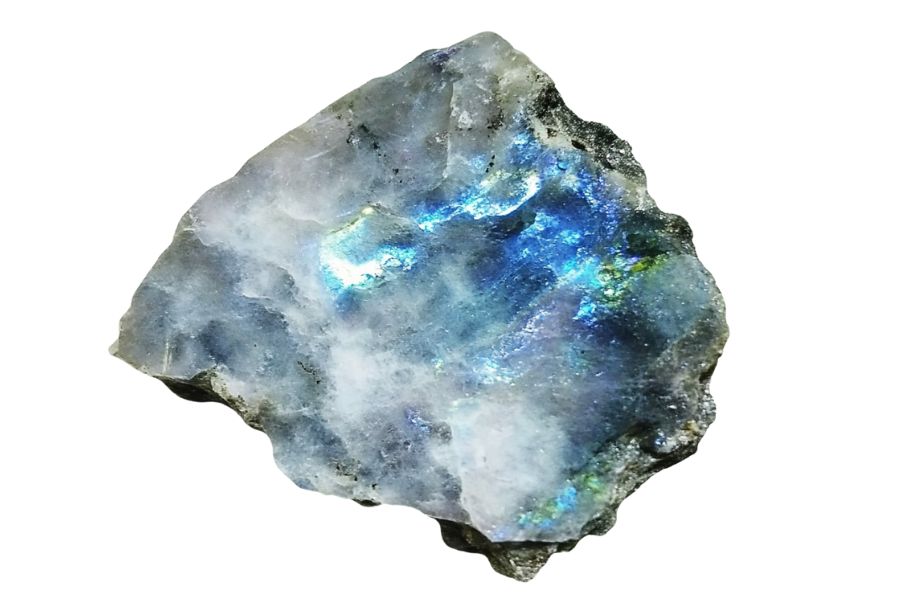Rocks tell stories. Labradorite speaks of ancient times when molten earth cooled into something beautiful. People travel far to find this special stone in Missouri.
You don’t need to be a pro to hunt for labradorite. Many folks spend weekends searching through creek beds and open fields. Some bring their kids along, making it a family adventure.
Finding your first piece feels like winning a small lottery. The thrill of spotting it among ordinary rocks keeps collectors coming back. This guide will show you where to look and what to expect during your search.
How Labradorite Forms Here
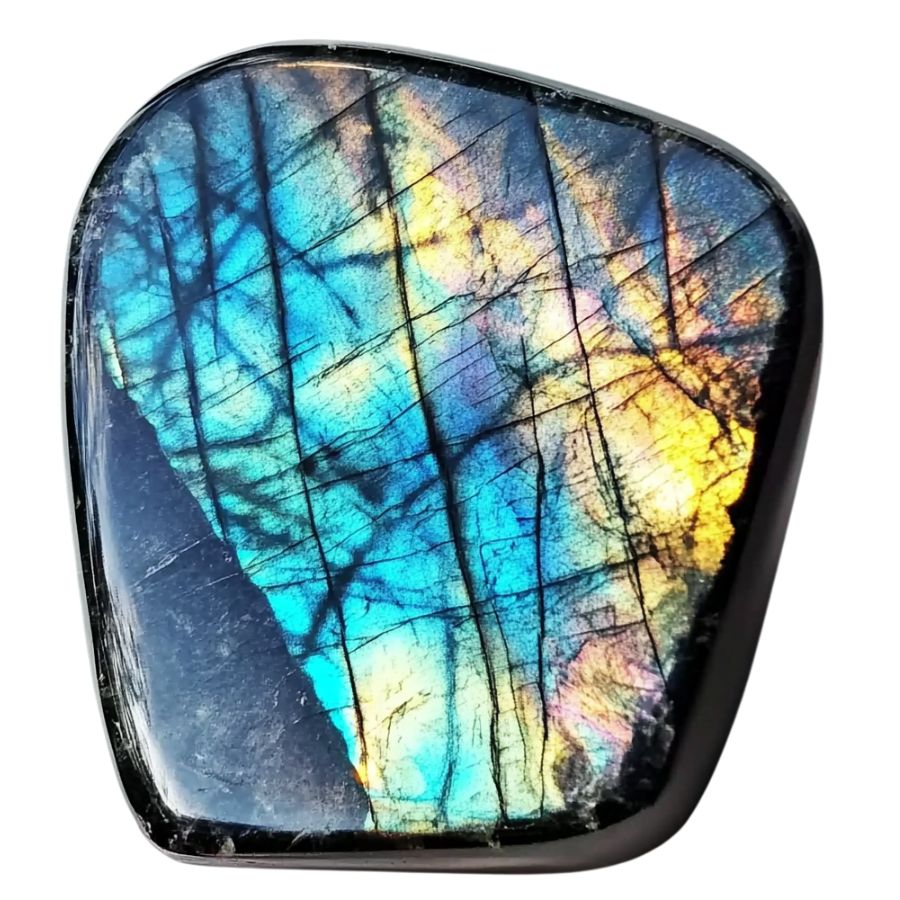
Labradorite forms deep underground when magma slowly cools and crystallizes. The process happens when different minerals separate while cooling, creating thin layers stacked on top of each other. These layers have slightly different chemical makeups, usually about 1 micron thick.
When light hits these layers, it creates that stunning blue-green flash we love, called labradorescence. The stone starts out as a mix of calcium, sodium, aluminum, and silicate minerals.
As it cools, these minerals organize themselves into this layered pattern, which happens most often in places where magma intrudes into the surrounding rock. It’s like nature’s own light show, frozen in stone.
Types of Labradorite
Labradorite comes in several distinct varieties. Each type exhibits special qualities that make it sought after by collectors.
Blue Labradorite
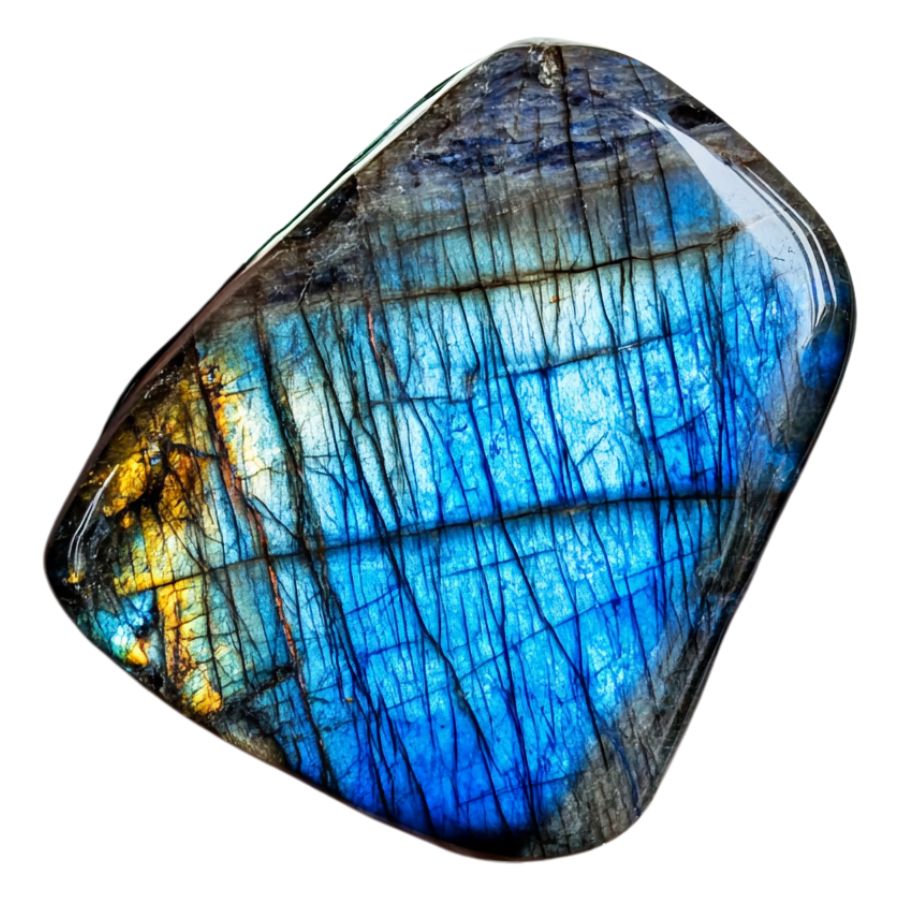
Blue Labradorite stands out for its remarkable blue iridescence against a dark gray or black background. When light hits the stone’s surface, it creates a stunning display of electric blue flashes, sometimes accompanied by hints of green or violet.
The blue flashes appear most vivid when viewing the stone from specific angles, creating an almost magical transformation as you rotate it. This effect is often compared to the ethereal beauty of the Northern Lights.
Exceptional specimens display an intense, electric blue flash that covers a large portion of the stone’s surface. Some pieces also show secondary colors like aqua or sea green, adding depth to their visual appeal. The contrast between the dark base and bright blue flashes makes each piece unique.
Golden Labradorite
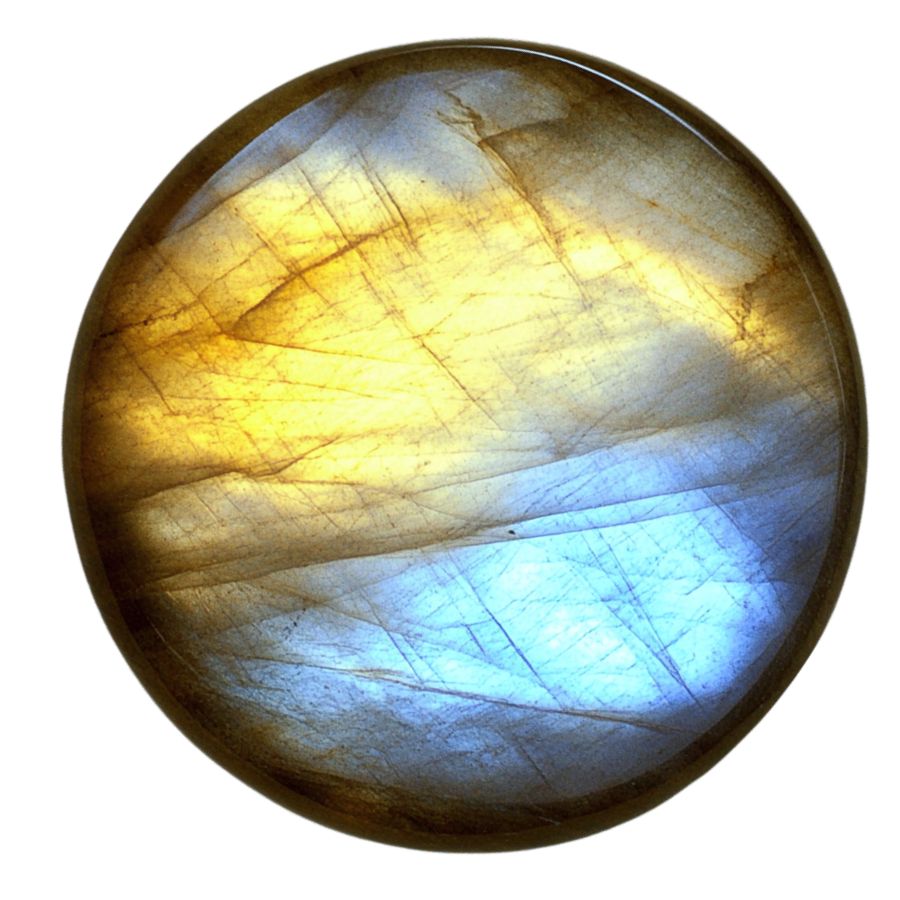
Golden Labradorite displays a mesmerizing golden-yellow sheen that sets it apart from other varieties. The stone’s surface exhibits brilliant flashes of gold and amber, creating a warm, sun-like glow that seems to emanate from within. These golden rays often appear alongside subtle hints of green or champagne colors.
What makes Golden Labradorite special is its ability to display multiple golden hues simultaneously. Some specimens show a range of colors from pale yellow to deep amber, creating a multi-dimensional effect.
The golden flash can vary in intensity and coverage, with premium specimens showing broad, bright areas of gold schiller.
Rainbow Moonstone
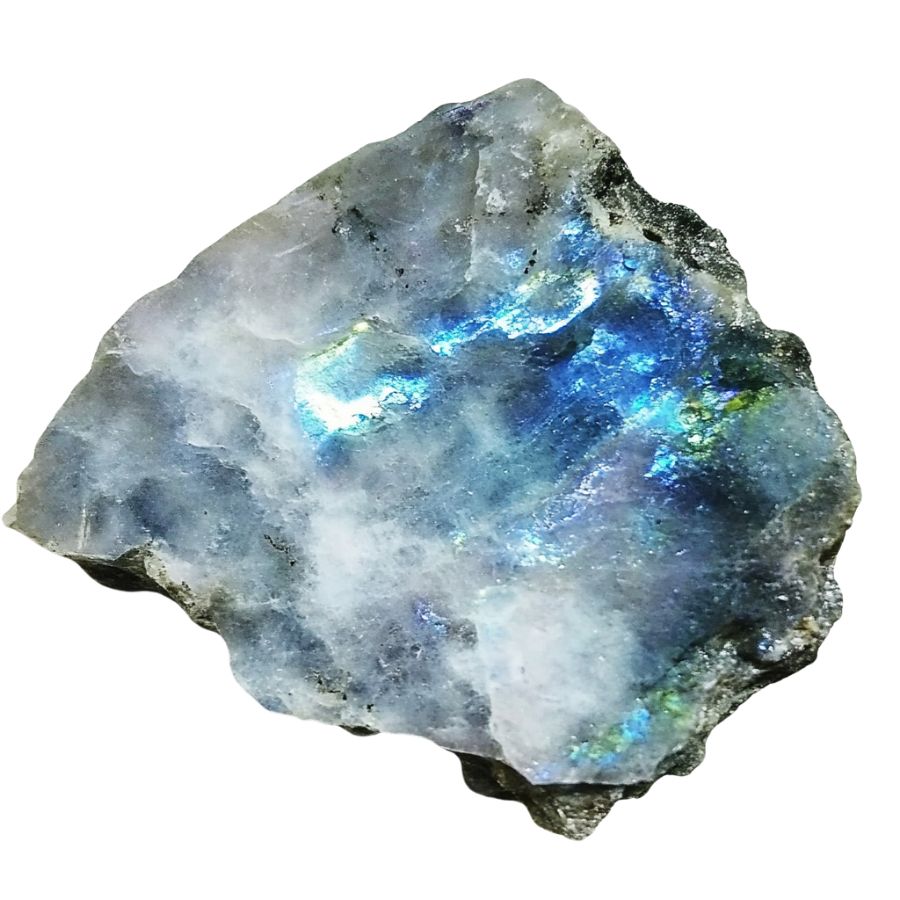
Rainbow Moonstone Labradorite exhibits a distinctive white or colorless base with an enchanting blue sheen that floats across its surface. Blue sheen is often accompanied by flashes of other colors, including pink, yellow, and green.
This stone’s most captivating feature is how its colors appear to float just beneath the surface, creating an almost three-dimensional effect. As light moves across the stone, these colors shift and change, revealing new patterns and combinations. This creates a dynamic display that seems to change with every movement.
The stone’s transparency can range from translucent to semi-transparent, with the most valued pieces showing excellent clarity beneath their shimmering surface.
Spectrolite
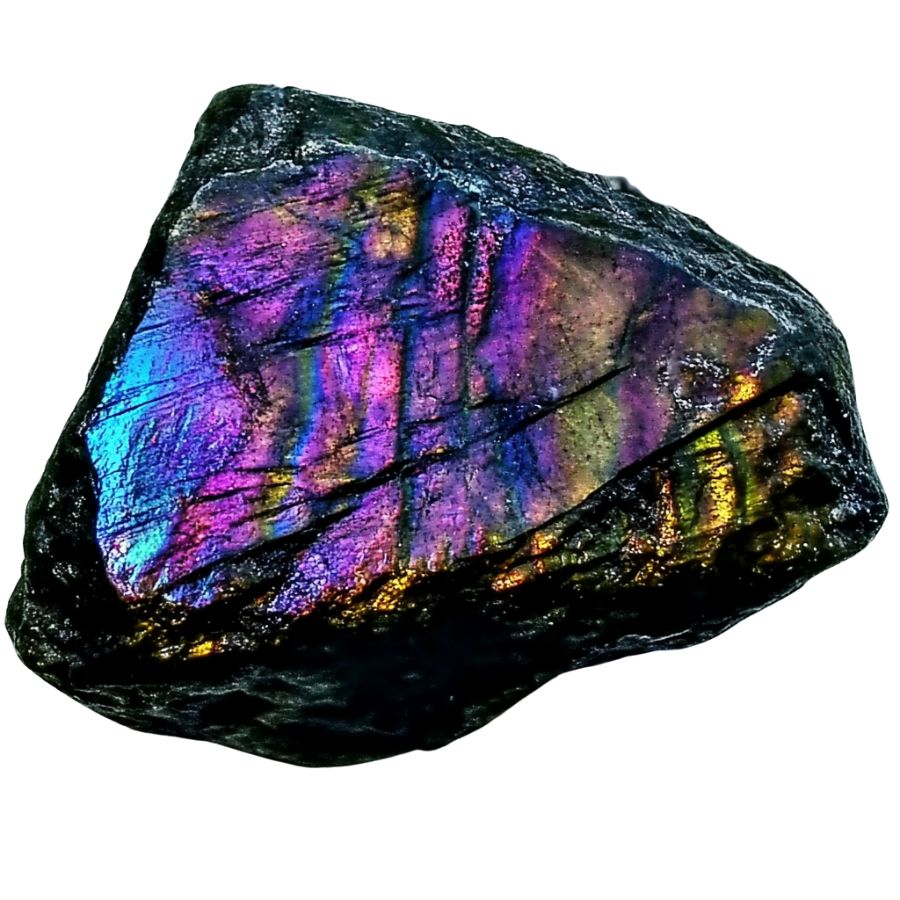
Spectrolite reigns as the most dramatic member of this stone family, with its distinctive jet-black base setting it apart from other varieties.
What makes it truly special is that premium specimens can simultaneously display the complete spectrum of colors, from deep indigo to bright orange, emerald green to royal purple, all in a single piece.
The finest specimens possess what experts call “full-face color,” meaning the vibrant display covers most of the stone’s surface rather than appearing in small patches.
This characteristic, combined with its remarkable color intensity, has earned Spectrolite its reputation as the most visually impressive variety of all similar stones.
Transparent Labradorite
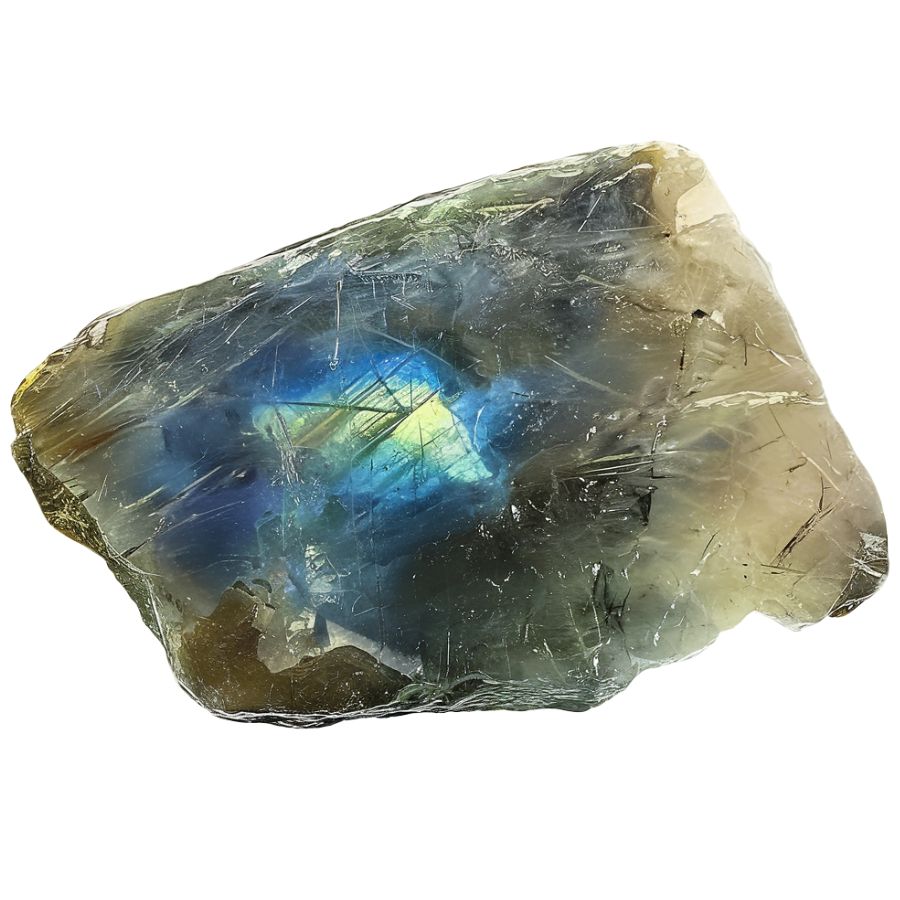
Transparent Labradorite exhibits a remarkable clarity that separates it from its opaque cousins. Crystal-clear areas allow light to pass through, creating an exceptional display of blue flashes against the transparent background.
Natural specimens often show areas of both transparency and translucency. Beautiful color changes occur as you move this stone, with the transparent areas revealing subtle blue sheens that seem to float within the crystal.
Some pieces display additional colors like soft greens or pale yellows, though the blue flash remains dominant.
Remarkable clarity combines with the signature color play to create stones that appear almost liquid-like.
Andesine-Labradorite
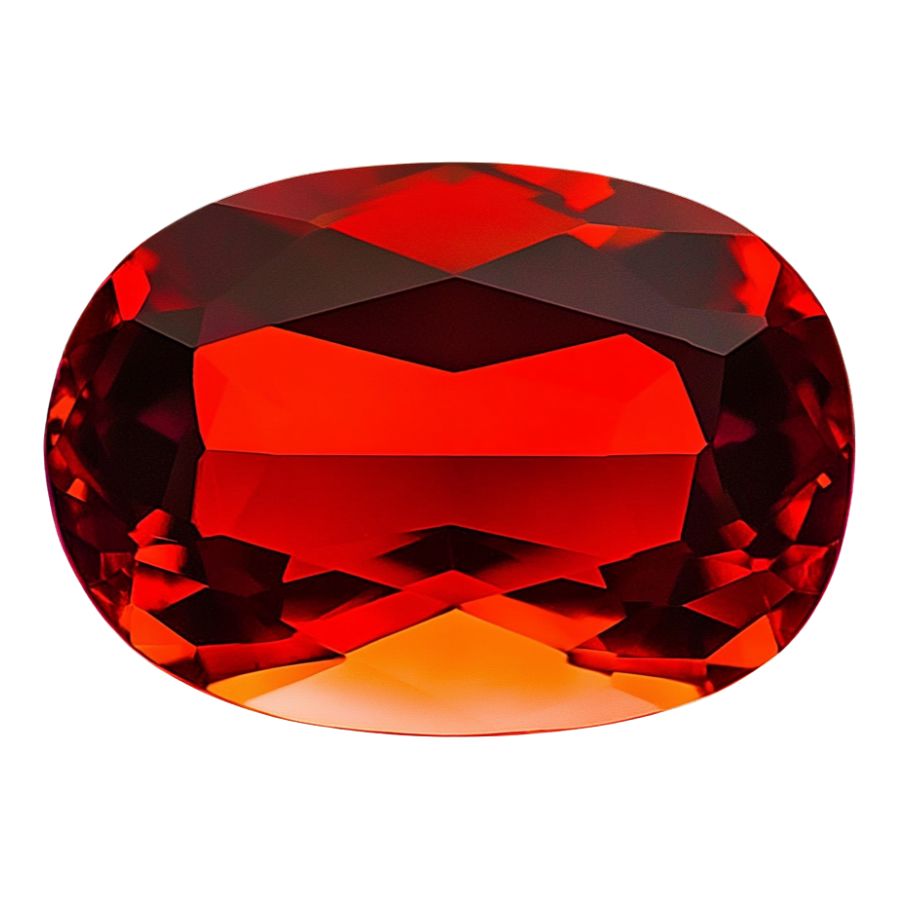
Reddish-orange hues dominate Andesine-Labradorite’s appearance, creating a warm and inviting glow. Delicate green and yellow streaks often appear throughout the stone, adding complexity to its color palette.
Metallic sparkles dance across the surface, different from the typical labradorescent effect. Fresh discoveries of this relatively new gemstone continue to reveal new color combinations.
Striking color variations appear in high-quality pieces, ranging from deep red to bright orange. Many specimens show subtle color zoning, where different hues blend together in distinct patterns.
Black Labradorite
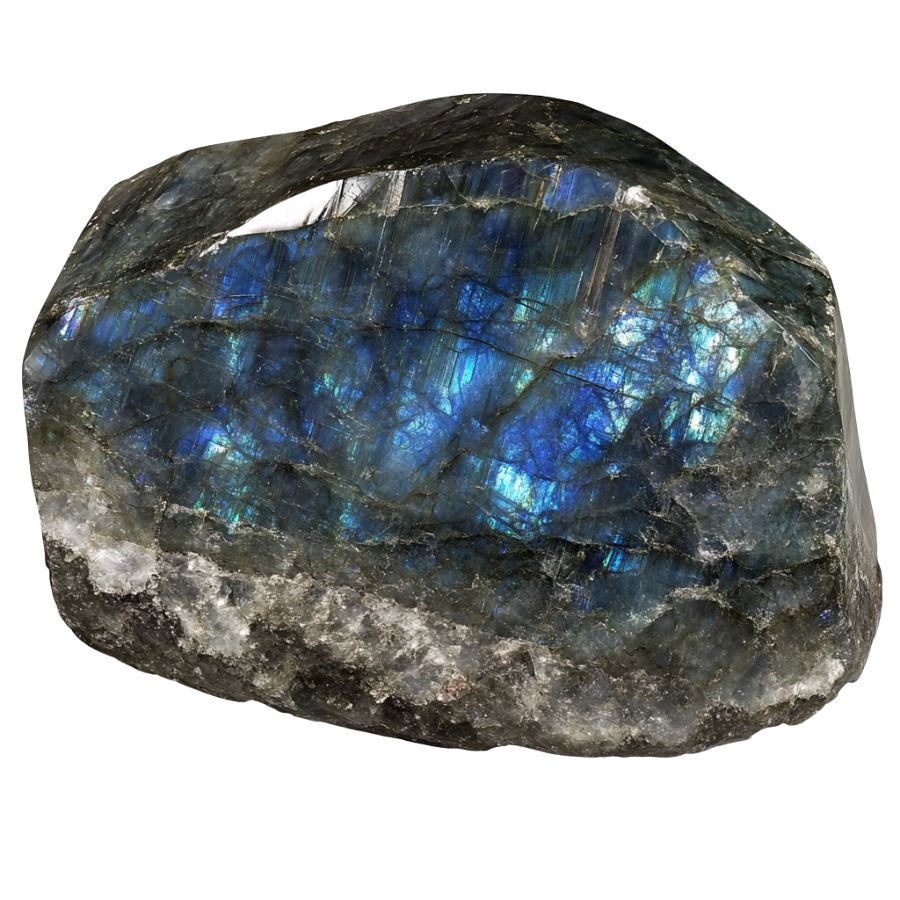
Black Labradorite presents a dramatic dark canvas that emphasizes its colorful display. Bright flashes of color stand out dramatically against the deep black background, creating stunning visual contrast.
Most specimens show multiple colors at once, creating an eye-catching display. These color displays often include electric blues, emerald greens, and golden yellows, all visible simultaneously.
Natural sunlight brings out the boldest displays, while artificial light can highlight subtle color variations. Some specimens also show interesting patterns in how the colors are distributed.
Brown Labradorite
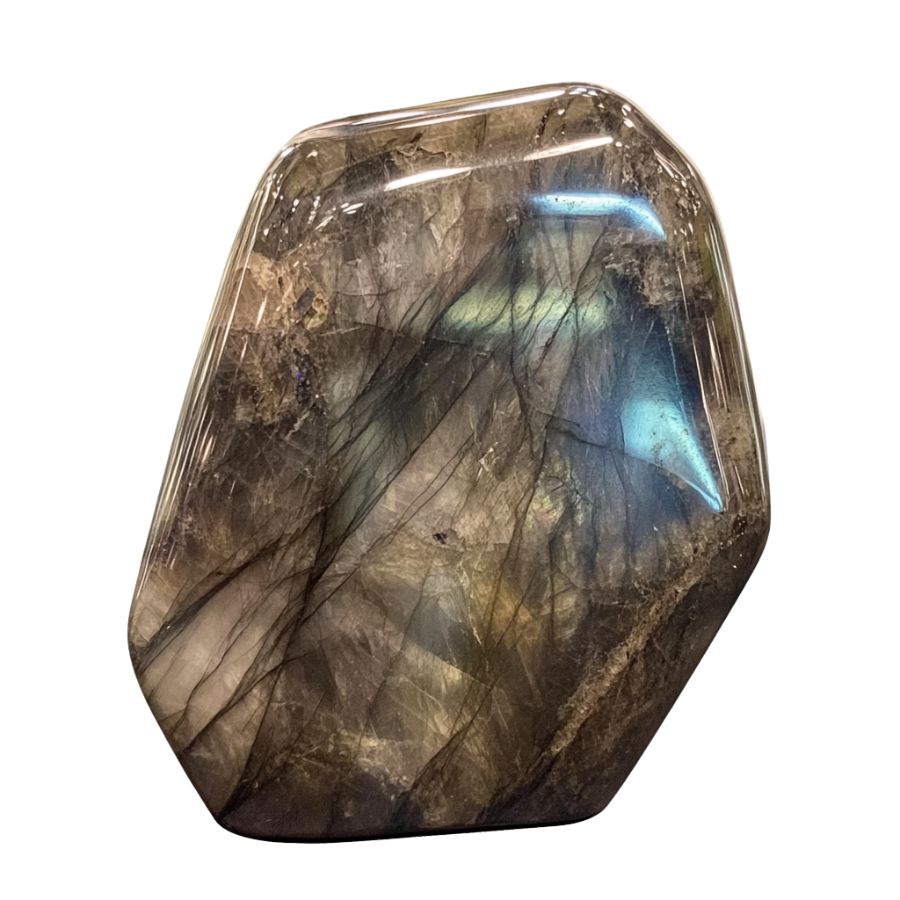
Brown Labradorite features rich earth tones ranging from deep chocolate to warm amber. Peach and orange undertones often appear throughout the stone, creating depth and dimension.
Multiple color zones create interesting patterns within each stone. These patterns can include stripes, swirls, or mottled areas that combine different brown and orange hues.
Subtle iridescence sometimes appears on the surface, adding an unexpected shimmer to the earthy colors. This effect is more subdued than in other varieties but adds an interesting dimension to the stone’s appearance.
If you want REAL results finding incredible rocks and minerals you need one of these 👇👇👇
Finding the coolest rocks in isn’t luck, it's knowing what to look for. Thousands of your fellow rock hunters are already carrying Rock Chasing field guides. Maybe it's time you joined the community.
Lightweight, mud-proof, and packed with clear photos, it’s become the go-to tool for anyone interested discovering what’s hidden under our red dirt and what they've already found.
Join them, and make your next rockhounding trip actually pay off.
What makes it different:
- 📍 Find and identify 140 incredible crystals, rocks, gemstones, minerals, and geodes across the USA
- 🚙 Field-tested across America's rivers, ranchlands, mountains, and roadcuts
- 📘 Heavy duty laminated pages resist dust, sweat, and water
- 🧠 Zero fluff — just clear visuals and straight-to-the-point info
- ⭐ Rated 4.8★ by real collectors who actually use it in the field
What Rough Labradorite Looks Like
Labradorite in its rough form can be tricky to spot, but once you know what to look for, it becomes easier. Here’s how to recognize this fascinating stone in its natural state.
Look for the Signature Flash
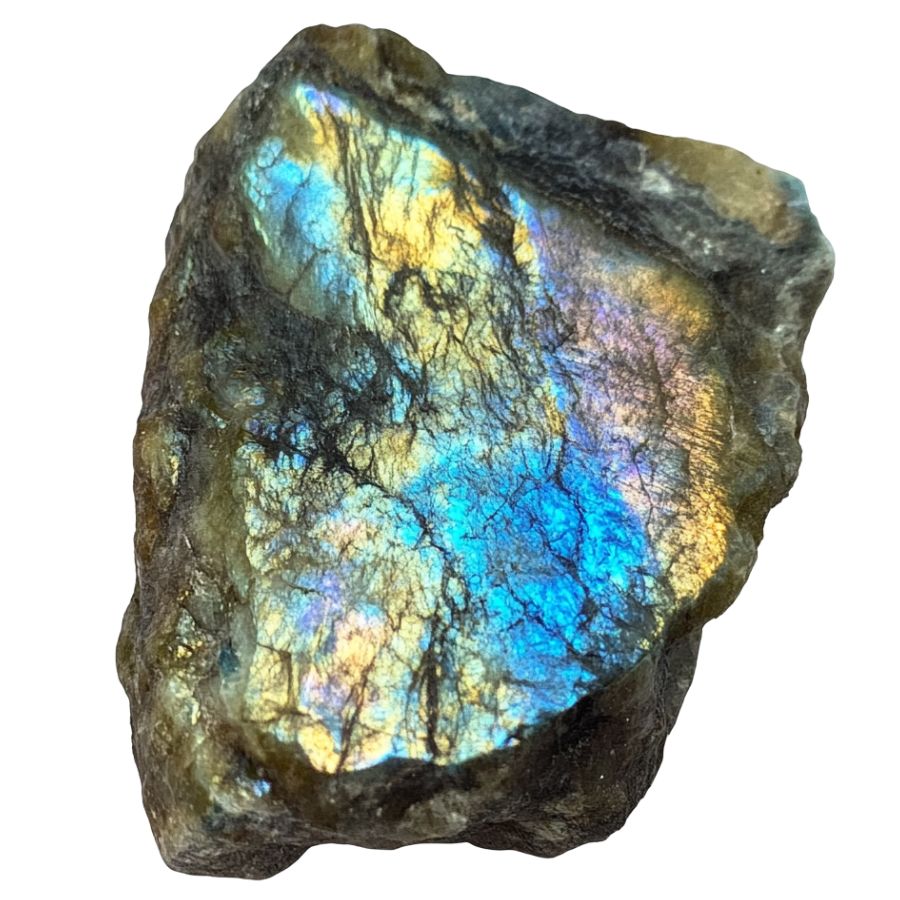
Raw labradorite often shows patches of its famous iridescent flash, even when unpolished. Check dark gray or black areas under direct sunlight – you might catch glimpses of blue, green, or gold shimmer.
Sometimes, you’ll need to wet the surface slightly to see this effect better. The flash isn’t always obvious but usually appears as scattered patches.
Check the Base Color and Texture
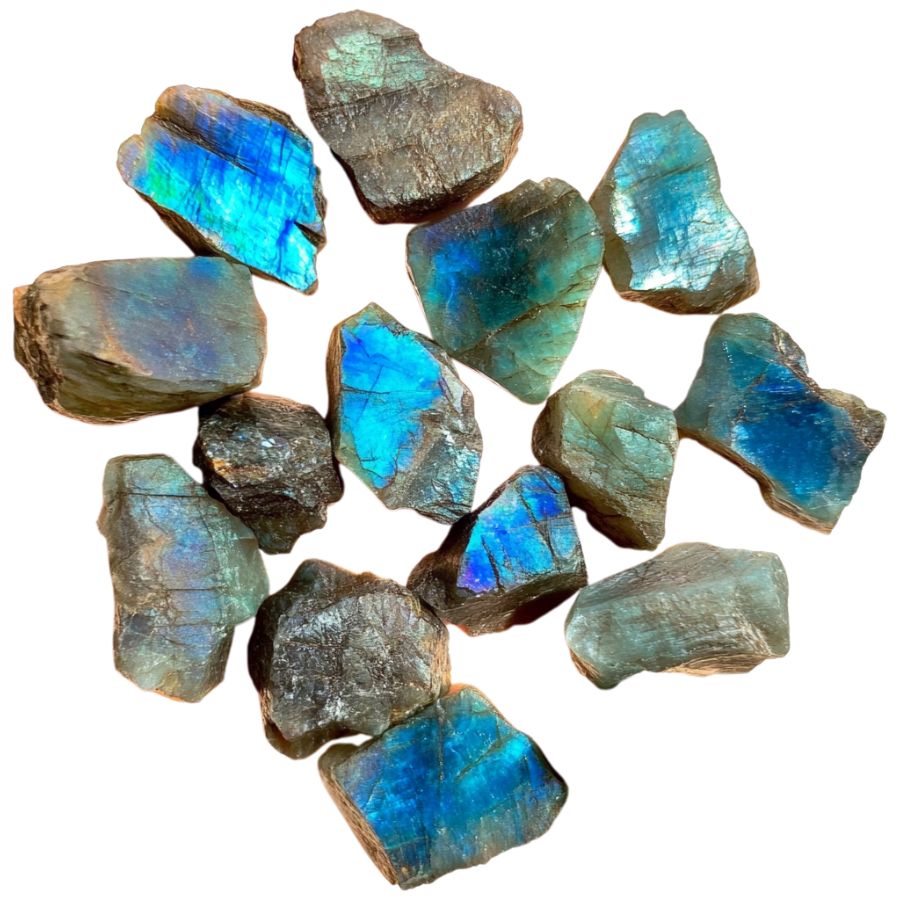
The main body should be dark gray to black, sometimes with a slight greenish tinge. The surface feels smooth but not glossy, similar to unpolished glass.
Look for a slightly bumpy texture with occasional flat surfaces. Fresh breaks will show a more uniform color than weathered surfaces.
Assess the Hardness and Breakage
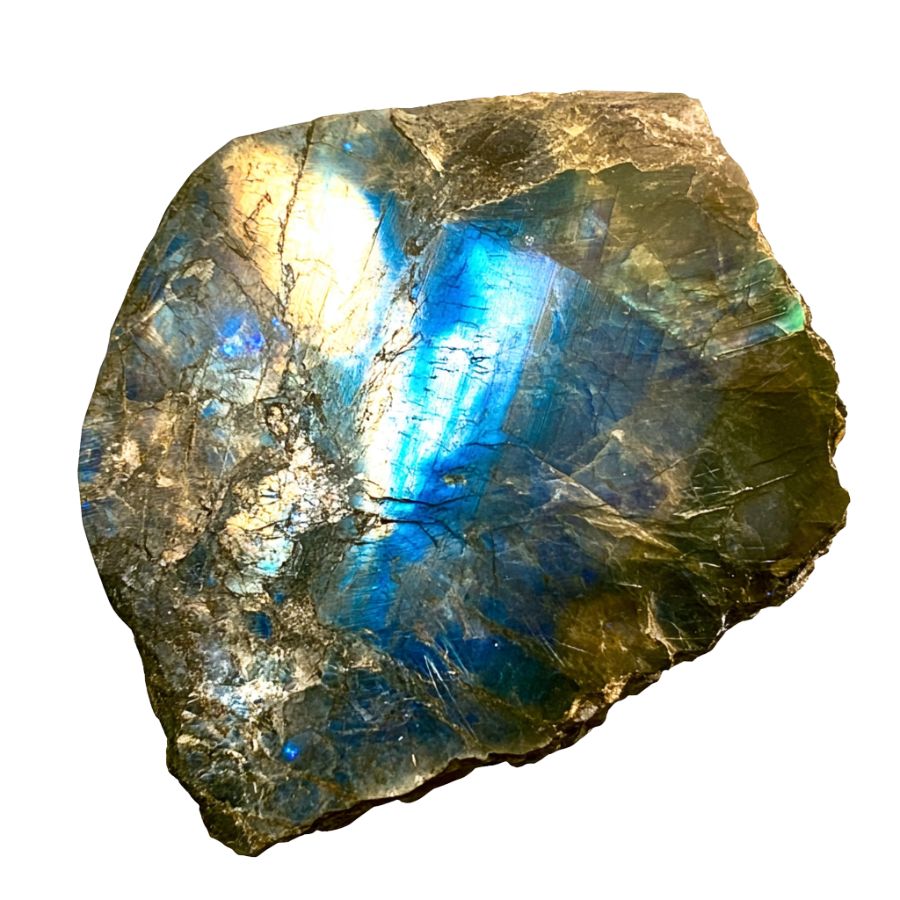
Try scratching the surface with a copper penny – it shouldn’t leave a mark. The stone often breaks with smooth, flat surfaces at distinct angles.
You’ll notice these angular breaks are pretty characteristic, unlike random rough breaks in common rocks.
Test the Translucency
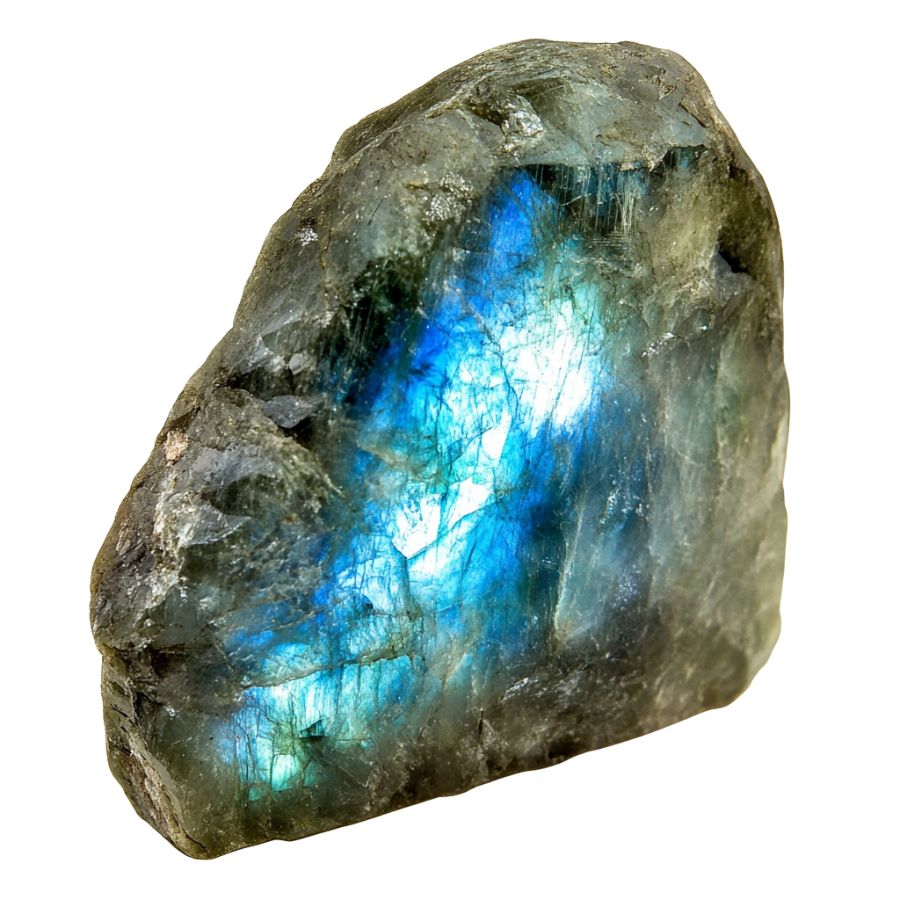
Hold a thin edge up to strong light. Raw labradorite should show some translucency, appearing slightly cloudy rather than completely opaque. The edges might look slightly whitish or gray when light passes through. Thicker pieces will appear darker and more opaque.
A Quick Request About Collecting
Always Confirm Access and Collection Rules!
Before heading out to any of the locations on our list you need to confirm access requirements and collection rules for both public and private locations directly with the location. We haven’t personally verified every location and the access requirements and collection rules often change without notice.
Many of the locations we mention will not allow collecting but are still great places for those who love to find beautiful rocks and minerals in the wild without keeping them. We also can’t guarantee you will find anything in these locations since they are constantly changing.
Always get updated information directly from the source ahead of time to ensure responsible rockhounding. If you want even more current options it’s always a good idea to contact local rock and mineral clubs and groups
Tips on Where to Look
Labradorite isn’t super common in everyday places, but with some smart searching, you can find it. Here’s where you should look:
Metamorphic Rock Formations
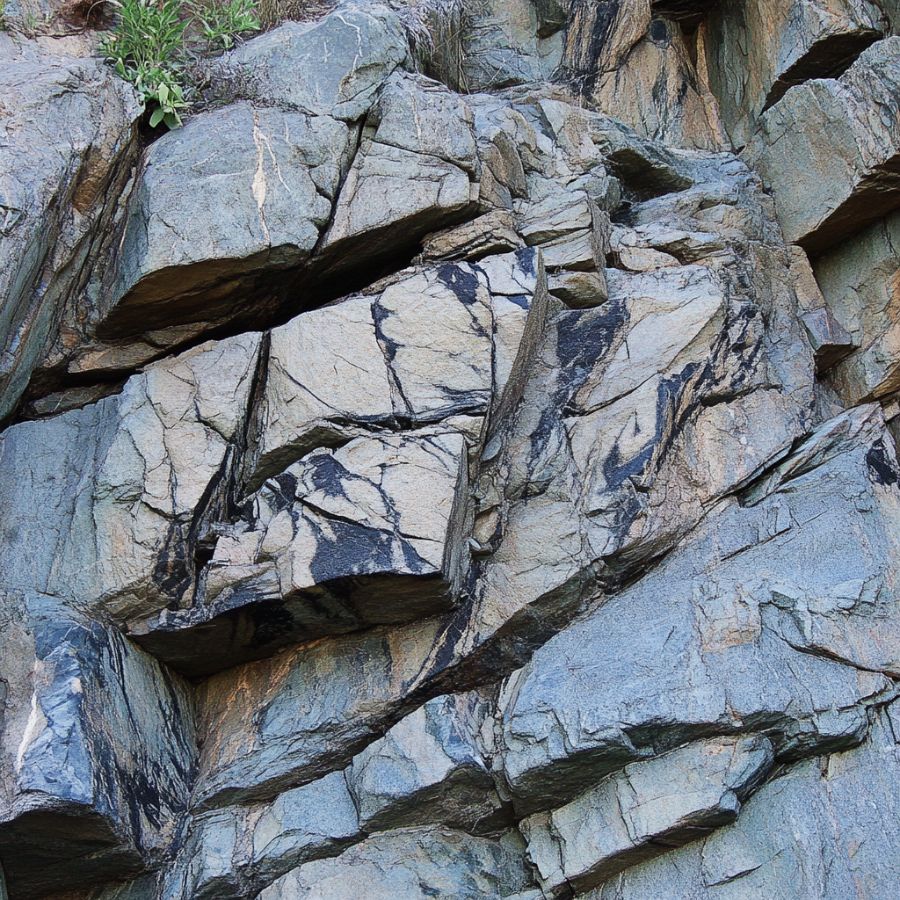
Look for dark-colored rock outcrops. Spot areas with lots of feldspar minerals. Check exposed cliff faces. Sometimes, when the sun hits just right, you might catch that signature blue flash from larger formations that’s a dead giveaway for labradorite presence.
Glacial Deposits
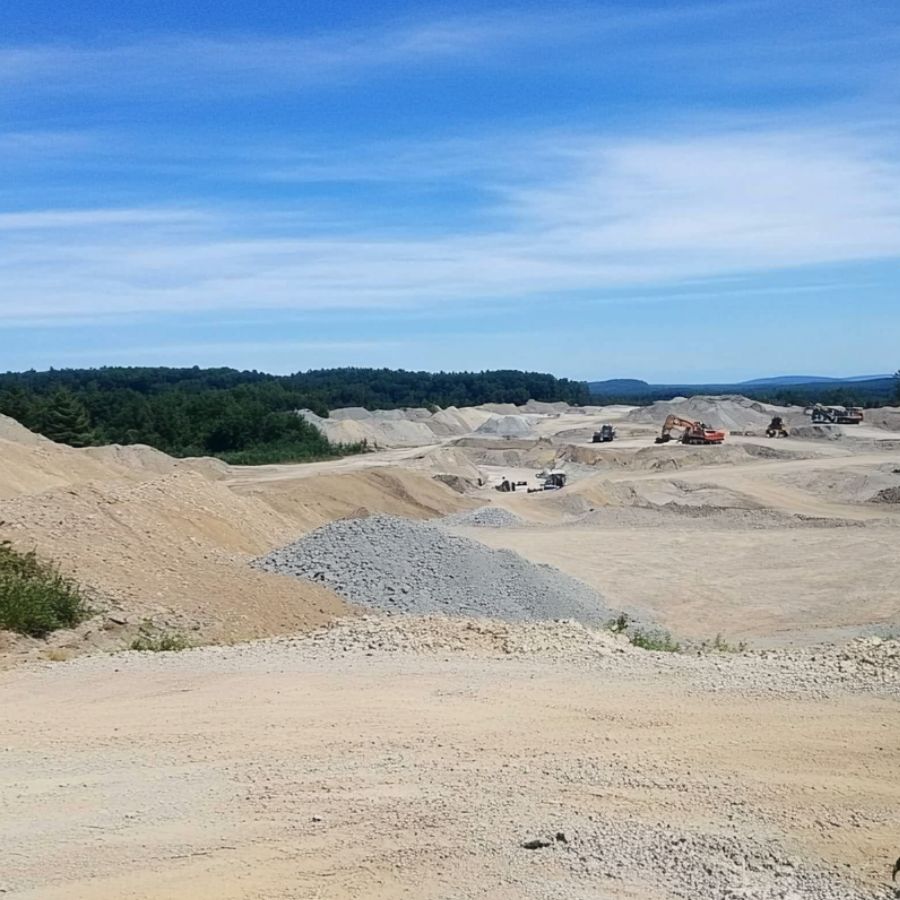
Search river beds after glacial deposits. Check gravel pits near old glacial paths. Look for smooth, dark gray stones mixed with other rocks. These deposits often contain chunks of labradorite that have broken off from larger formations and been carried downstream over thousands of years.
Mining Tailings
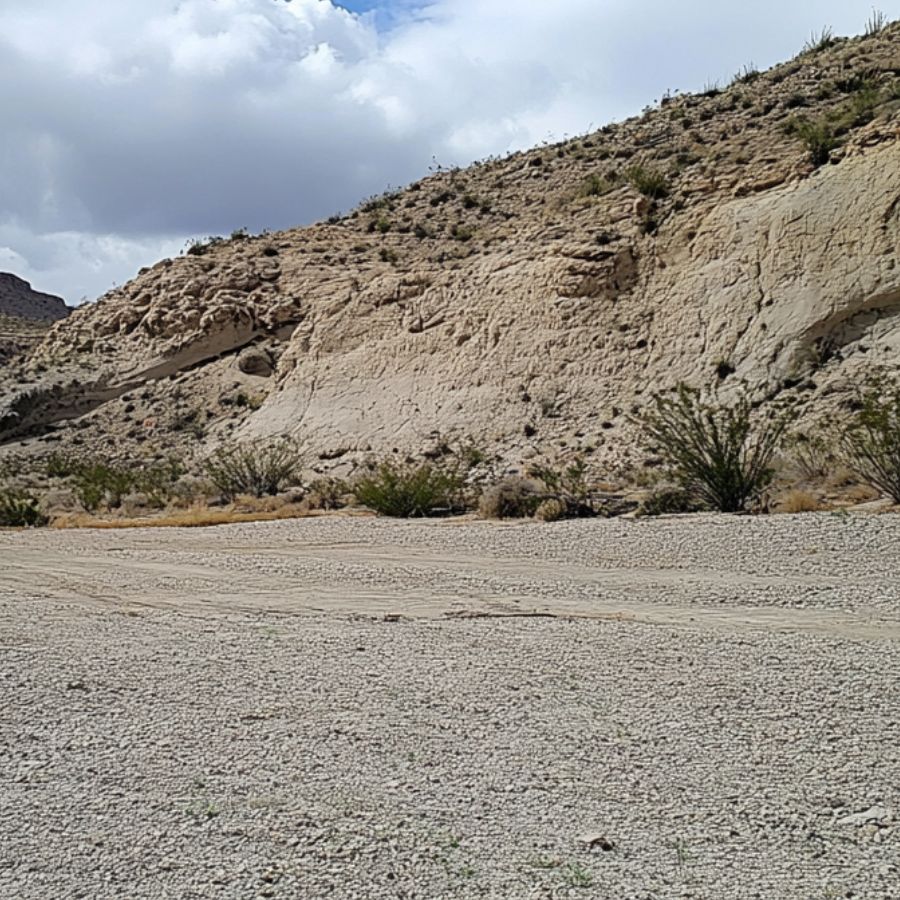
Visit abandoned feldspar mines. Check mine dump areas. Dig through tailings piles. Look for flat, shiny surfaces. The waste rock from old mining operations often contains overlooked pieces of labradorite that weren’t considered valuable during active mining periods but are perfect for collectors.
Stream Beds
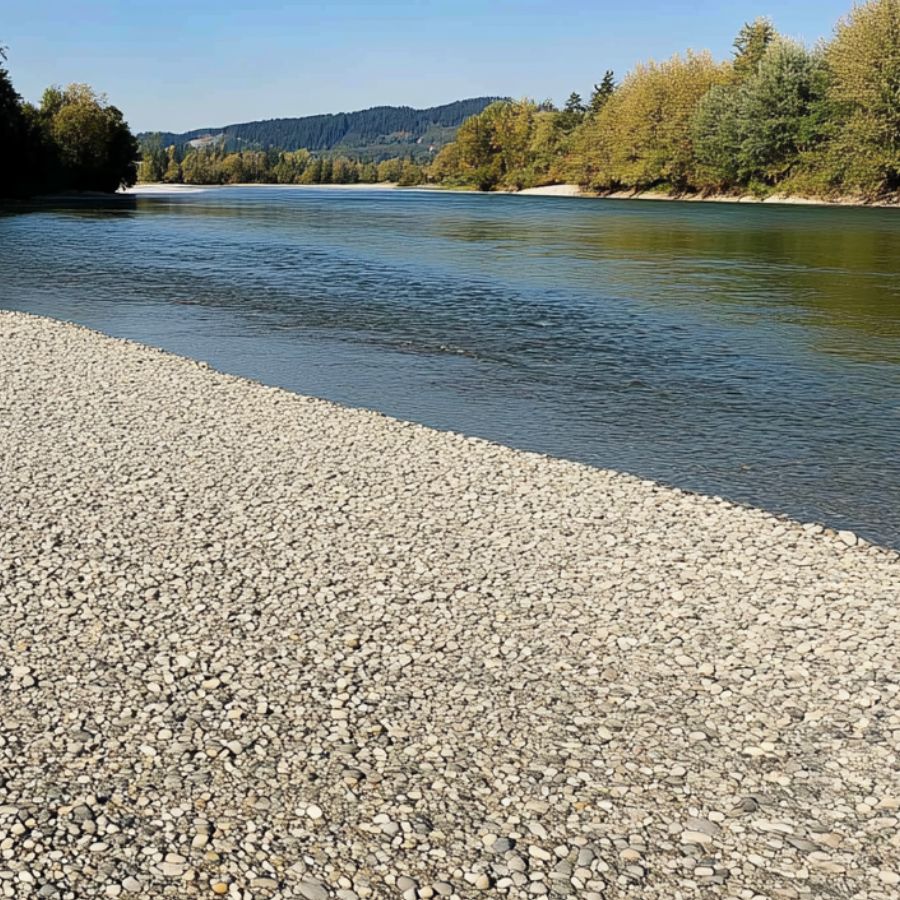
Search clear-water streams. Look under water-worn rocks. Check gravel bars after rain. Spot dark, plate-like stones. The constant water movement often exposes and polishes these stones, making them easier to identify when wet.
Some Great Places To Start
Here are some of the better places in the state to start looking for Labradorite:
Always Confirm Access and Collection Rules!
Before heading out to any of the locations on our list you need to confirm access requirements and collection rules for both public and private locations directly with the location. We haven’t personally verified every location and the access requirements and collection rules often change without notice.
Many of the locations we mention will not allow collecting but are still great places for those who love to find beautiful rocks and minerals in the wild without keeping them. We also can’t guarantee you will find anything in these locations since they are constantly changing.
Always get updated information directly from the source ahead of time to ensure responsible rockhounding. If you want even more current options it’s always a good idea to contact local rock and mineral clubs and groups
Annapolis
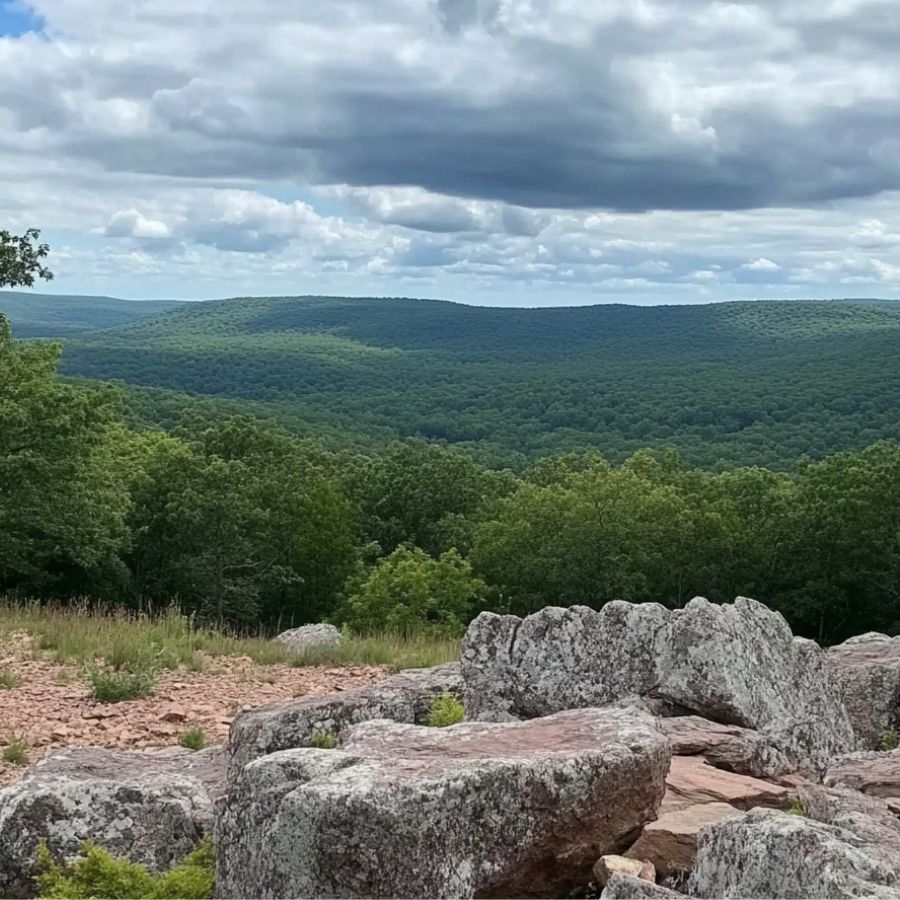
Annapolis is a small city in southern Iron County, located at the meeting point of Missouri Routes 49 and K. Big Creek flows to its west, about three miles south of Sabula and three and a half miles northwest of Vulcan. This area sits within the St. Francois Mountains region, known for its ancient igneous rocks.
Labradorite has been found in the Annapolis area, along with quartz, magnetite, and dolomite. The Annapolis Lead Mine, about one mile east-northeast of town along Iron County Road 138, offers good hunting grounds. Many rockhounds search through old mine tailings where these minerals get exposed.
The region features unique granite intrusions and volcanic ash-flow tuffs that create a diverse mineral environment. These old volcanic formations happened over a billion years ago, making the area geologically special.
Big Creek also provides searching opportunities since it carries mineral-rich sediments from the mining sites. You can check stream beds after heavy rains when new materials get washed down.
Potosi

Potosi is located in Washington County, about 72 miles southwest of St. Louis. The city has earned the nickname “Barite Capital of the World” because of its rich mining history.
The geology around Potosi features limestone and dolomite formations that contain many minerals. Over time, mineral-rich water seeped through cracks, creating deposits of various stones.
You can search for labradorite in old mining sites and quarries throughout the area. Many collectors have success looking near the edges of abandoned barite mines where various minerals are exposed. Local streams and creek beds also offer opportunities to find smaller pieces that water has naturally polished.
Potosi’s mineral wealth extends beyond labradorite to include galena, barite, and drusy quartz. Each spring, the area attracts many mineral enthusiasts during regional rockhounding events.
Fredericktown
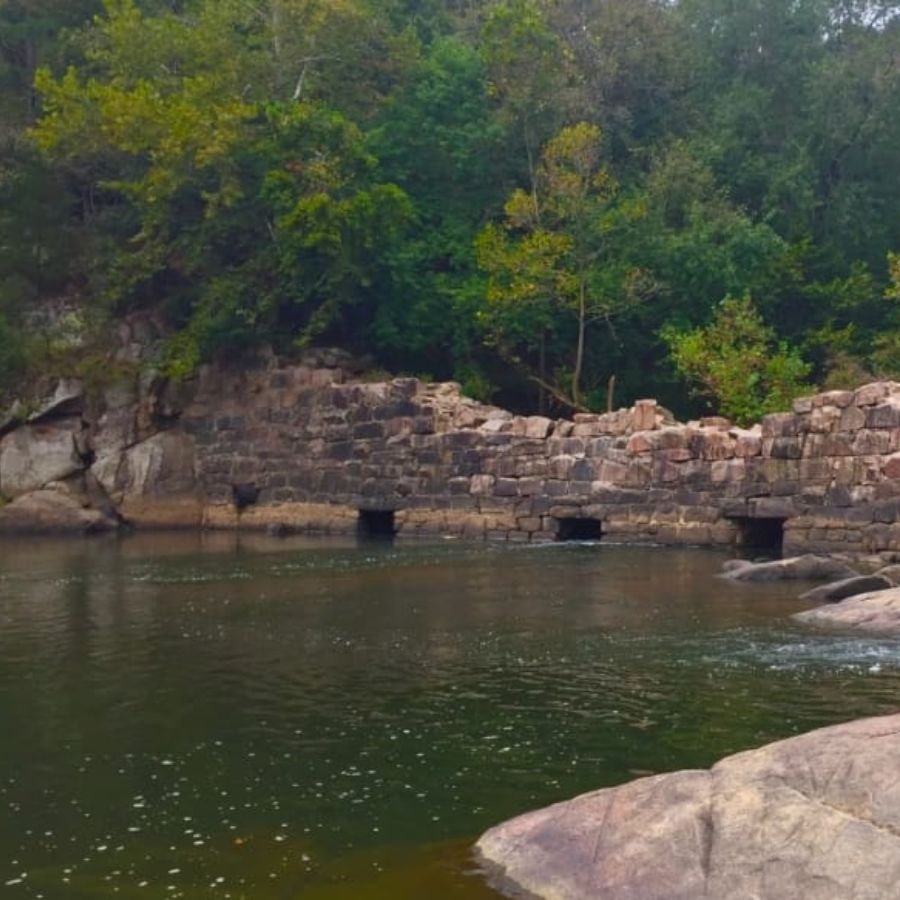
Fredericktown sits in northern Madison County, nestled within the northeastern foothills of the St. Francois Mountains. Located in the valley of the Little St. Francis River, this small city is mostly surrounded by the Mark Twain National Forest. Nearby
Labradorite can be found in the rock formations around Fredericktown. The area’s rich mining history has created excellent rockhounding opportunities, especially in the old mine tailings.
The region features unique igneous rock formations that date back millions of years. These ancient rocks are part of what makes the area’s geology special for mineral hunters. Past mining for silver and tungsten has left behind mineral-rich deposits worth exploring.
Search along the banks of the St. Francis River. City Lake and its surrounding shores also offer promising locations for finding Labradorite specimens. Check areas where erosion has revealed fresh material after rainstorms.
Warsaw
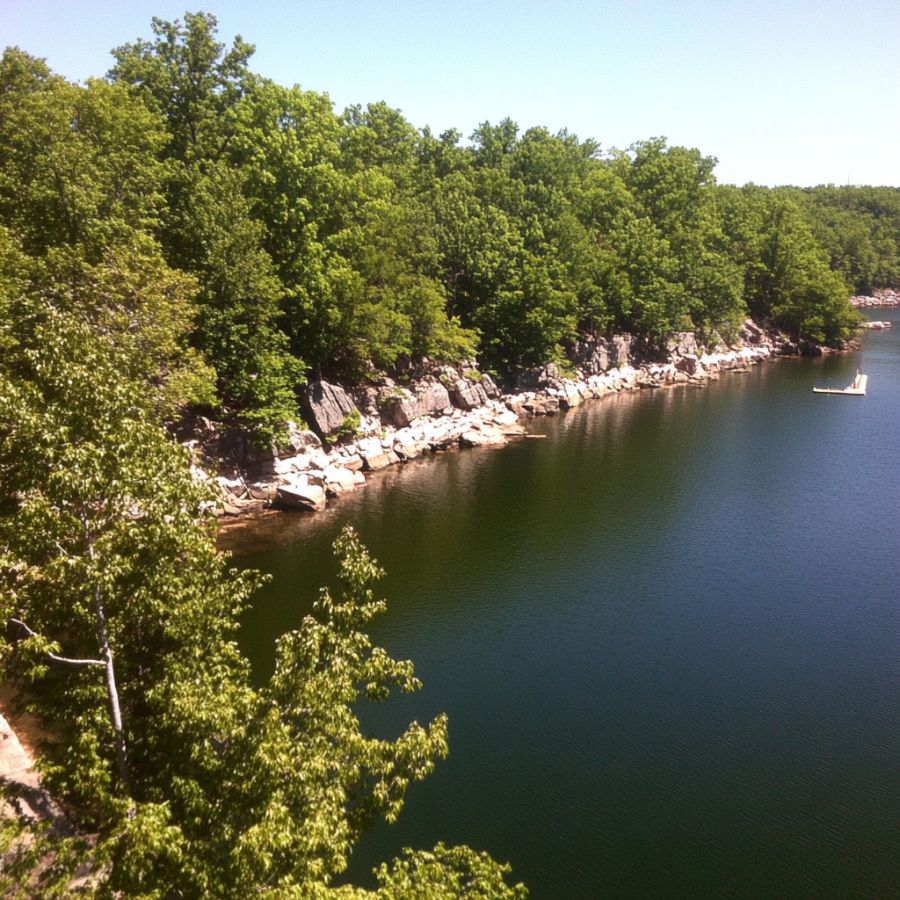
Warsaw is located in Benton County, where the Osage River meets two large lakes – Truman Reservoir and Lake of the Ozarks. This small city sits at the crossroads of U.S. Route 65 and Missouri Route 7, surrounded by water and rolling hills.
The area forms part of the famous Warsaw Formation, which dates back to the Mississippian period about 340 million years ago. This geological zone is mainly made up of limestone that was once an ancient seabed. Many fossil remains of sea creatures like corals and crinoids can be found in these rocks.
Rockhounds searching for labradorite should focus on the shorelines of both Truman Lake and Lake of the Ozarks. Several local quarries also yield good specimens when accessible to the public.
Road cuts along Highway 65 expose rock layers that sometimes contain labradorite specimens. Checking creek beds that feed into the lakes can be rewarding too, as water movement helps uncover these striking feldspars from their limestone surroundings.
Richwoods
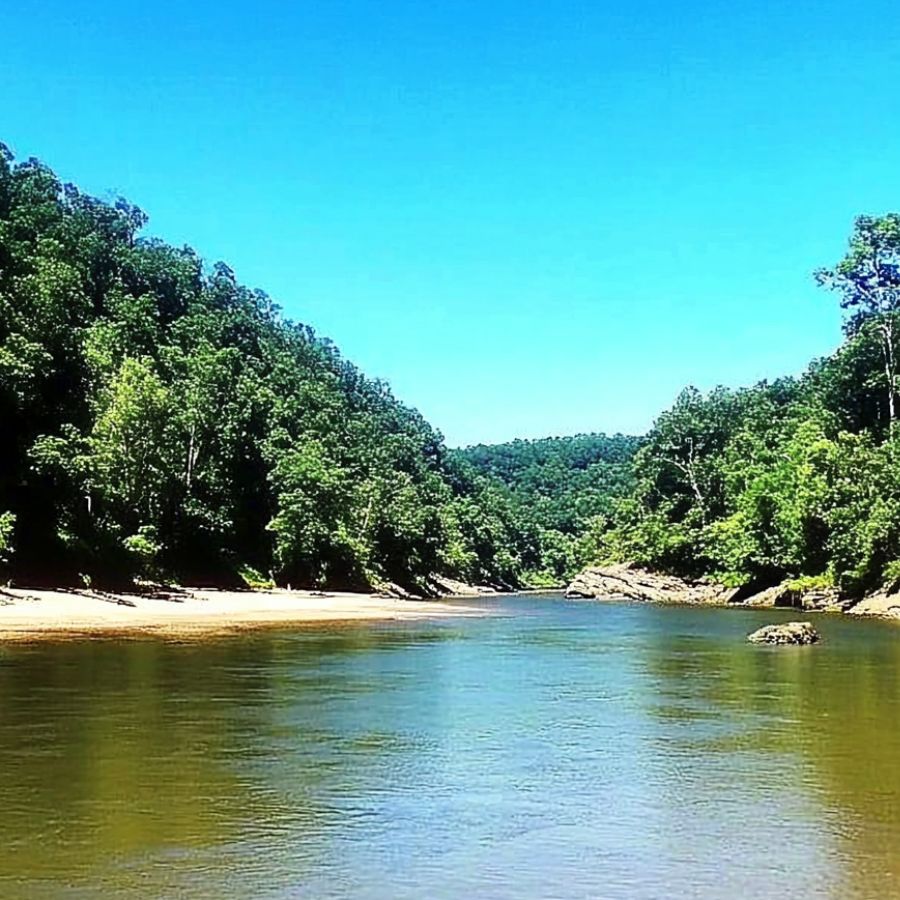
Richwoods is a small community located about 15 miles west of De Soto. This area sits in the Ozark Plateaus region, surrounded by dense forests that gave the place its name. Mineral collectors visit this rural spot because of its geological treasures.
Labradorite can be found in the red clay around abandoned barite mines near Richwoods. These old mines have exposed many interesting minerals over time. Many rockhounds search through the residuum (weathered material) where other minerals like drusy quartz and bladed barite also hide.
The land around Richwoods features dolomite and limestone formations that help create its rich mineral diversity. Historical sites like the Ditch Lead Mines have revealed important mineral deposits throughout the years.
For best results, focus your search in areas where mining activities once disturbed the ground. The local terrain offers plenty of opportunities for discovery. Weekend explorations in this quiet community often reward patient searchers with beautiful specimens.
Places Labradorite has been found by County
After discussing our top picks, we wanted to discuss the other places on our list. Below is a list of the additional locations along with a breakdown of each place by county.
| County | Location |
| Washington | Cadet |
| Washington | Mineral Point |
| Jasper | Joplin |
| Jasper | Webb City |
| Jasper | Oronogo |
| Madison | Mine La Motte |
| Madison | Silver Mines Recreation Area |
| Lewis | La Grange |
| Clark | Kahoka |
| Clark | Wayland |
| Clark | Alexandria |
| Benton | Lincoln |
| Lincoln | Moscow Mills |
| Franklin | Sullivan |
| Iron | Viburnum |
| St. Francois | Bonne Terre |
| Boone | Grindstone Nature Area |
| Washington | Haunted Ridge Rocks |

